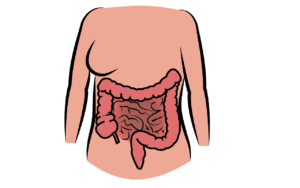A Phase 3 clinical trial for advanced biliary tract cancer (BTC) has found that there is an improved overall survival rate when patients are given the immunotherapy durvalumab in combination with chemotherapy.
This trial (TOPAZ-1) demonstrated that there is a 20% reduction in patient’s risk of death when this new combination is used.
BTC
BTC is a rare cancer which typically has very poor outcomes.
The standard of care for this cancer has been a chemotherapy treatment of a combination of gemcitabine and cisplatin. This has been the standard for the last decade.
Researchers are hopeful that immunotherapy used in combination with chemotherapy could become the new standard of care, providing patients better outcomes.
TOPAZ-1
TOPAZ-1 was initiated after a Phase 2 trial showed anti-tumor activity in BTC patients when durvalumab was used in combination with gemcitabine and cisplatin.
TOPAZ-1 was a Phase 3 investigation which added immunotherapy to the current standard of care: chemotherapy. It was the first investigation to show that this combination can increase survival without serious AEs.
This trial included 685 patients diagnosed with previously untreated, unresectable locally advanced, recurrent, or metastatic BTC. This multi-center trial included patients from Japan, Thailand, China, South Korea, the United States, and other countries.
Participants were stratified by their disease status and tumor location. Most patients (55%) had intrahepatic cancer. 19% were diagnosed with extrahepatic cancer, and the remaining 25% had gallbladder cancer. The median age was 64.
Patients were randomized 1 to 1 to either receive durvalumab (1500mg once every 3 weeks) and chemotherapy (341 patients) or placebo and chemotherapy (344 patients). There were 8 cycles of treatment. Following those 8 cycles, treatment moved to every 4 weeks or until there were unacceptable levels of toxicity or disease progression.
The primary endpoint of this investigation was overall survival. Also examined were progression free survival, safety, and objective response rate.
Results
The durvalumab/chemotherapy arm at a median follow up of 13.7 months had the following survival rates:
- Median overall survival was 12.8 months
- 18 month overall survival rate was 35.1%
- 24 month overall survival rate was 24.9%
There was a median progression-free survival of 7.2 months in this group. The overall response rate was 26.7%.
The placebo/chemotherapy arm at a median follow up of 12.6 months had the following survival rates:
- Median overall survival 11.5 months
- 18 month overall survival rate was 25.6%
- 24 month overall survival rate was 10.4%
The median progression free survival was 5.7 months, and the overall response rate was 18.7%.
The most commonly reported AEs were anemia, experienced by 48.2% of patients, neutropenia, experienced by 31.7% of patients, as well as nausea, experienced by 40.2% of patients.
In the treatment group, 62.7% of participants experienced a potentially serious AE (75.7% experienced a grade 3 or 4 AE). In the placebo group, 64.9% of participants experienced a potentially serious AE (77.8% experienced a grade 3 or 4 AE)
Researchers are hopeful about this new treatment option. Ultimately, they are hopeful it could become the new standard of care for patients diagnosed with advanced BTC.
You can read more about this therapy combination here.







